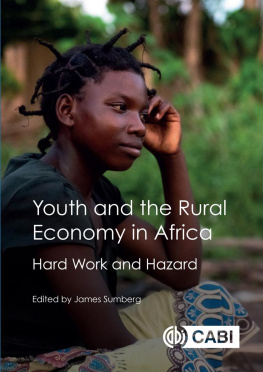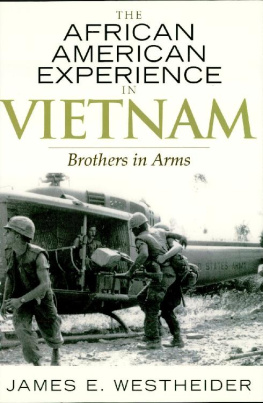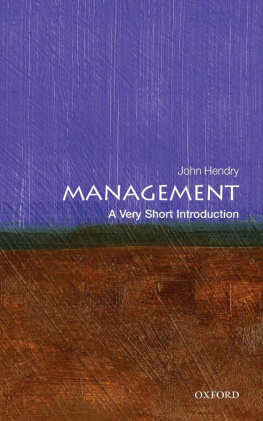First published 1964 by Transaction Publishers
Published 2017 by Routledge
2 Park Square, Milton Park, Abingdon, Oxon OX14 4RN
711 Third Avenue, New York, NY 10017, USA
Routledge is an imprint of the Taylor & Francis Group, an informa business
Copyright 1964 by James B. Hendry.
All rights reserved. No part of this book may be reprinted or reproduced or utilised in any form or by any electronic, mechanical, or other means, now known or hereafter invented, including photocopying and recording, or in any information storage or retrieval system, without permission in writing from the publishers.
Notice:
Product or corporate names may be trademarks or registered trademarks, and are used only for identification and explanation without intent to infringe.
Library of Congress Catalog Number: 2008039946
Library of Congress Cataloging-in-Publication Data
Hendry, James Bausch.
[Small world of Khanh Hau]
Rural Vietnam : the small world of Khanh Hau / James B. Hendry.
p. cm.
Originally published in 1964 under title: The small world of Khanh Hau.
Includes index.
ISBN 978-0-202-36299-1 (acid-free paper)
1. Khanh Hau (Vietnam)--Economic conditions. I. Title.
HC444.Z7K415 2009
330.95978--dc22
2008039946
ISBN 13: 978-0-202-36299-1 (pbk)
The material presented in Rural Vietnam was gathered in 1958-59 in the course of a program of joint research carried out by the Michigan State University Advisory Group in Viet Nam in cooperation with the National Institute of Administration. The purpose was to initiate a series of studies on the economic, social, and administrative problems in the rural areas of Viet Nam which would provide useful information to the students studying for the civil service at the National Institute of Administration, as well as to those actively concerned with framing policies of economic development. Although this objective was realized in part, deteriorating security conditions after 1959 severely hampered the continuation of the research program. Furthermore, government programs in the rural areas after 1959, such as the agrovilles and strategic hamlets, became essentially counter-insurgency measures, with rural development a somewhat subsidiary concern. Parts of Khanh Hau, in fact, were converted into a strategic hamlet. At the time this is being written, there are indications that the strategic hamlet program will be at least partially curtailed, because the enforced concentration of villagers for defensive purposes has been generating hostility rather than support for the government.
For this reason it seems probable that attempts to reshape the village life of South Viet Nam have had little lasting impact, and the observations made here on factors affecting economic activity have not been outdated by the events of the intervening years. The outcome of the struggle in Viet Nam is still far from certain, but if the disruption caused by incessant guerilla warfare can be eliminated, perhaps the country can make a start toward the promise of development which seems implicit in its land and its people.
The diacritical marks commonly used in written Vietnamese have been omitted in the interest of reducing publication problems. Since Vietnamese terms are not essential to the purpose of the book, this did not seem to pose a major deficiency as far as the general reader is concerned. Largely for this same reason, the index does not contain references in Vietnamese, with the exception of a very few terms in most common use. It is assumed that those with a reading knowledge of Vietnamese will be able to locate specific items by the English subject headings.
The title of The Small World of Khanh Hau was appropriated, without permission, from an article about the village studies which had been carried out by Francois Sully, correspondent for Newsweek Magazine. The article appeared in the Times of Viet Nam some time ago, and I hope Mr. Sully will forgive my high-handed use of his imaginative phrase-making.
I would like to express my thanks to the Rector of the National Institute of Administration, Mr. Vu Quoc Thong, and the Vice-Rector, Mr. Nghiem Dang, for their help in getting the project established, and to Professors Bui Quan An, Truong Ngoc Giau, and Cao Huu Dong of the Institute Faculty for their advice and cooperation during the period when field work was in progress. Thanks are also due to the USOM Field Service Division for their logistical support, and to the USOM Graphics Section for their help in preparing charts and maps used in the text. I am also grateful to a number of people who have worked in the project, or who have offered advice and help at various stages, including Messrs. Bui Quang Da, Nguyen Ngoc Yen, Le Due Gi, and Dang Van De of the Michigan State University Group staff, and Dr. J. Price Gittinger of USOM.
To my colleagues on the study, G. C. Hickey and L. W. Woodruff, I owe a special debt of gratitude for their continuous aid and assistance throughout and for the cordial and productive working relationships which existed at all times during the study. Each was working on a separate aspect of village life and activity, which was subsequently published in mimeographed form in Saigon, but the continual exchange of data, observations, and viewpoints was of enormous value in expanding what I could do alone and in placing my own findings in new perspectives. Mr. Nguyen Van Thuan also deserves special thanks for his patient, conscientious, sympathetic, and intelligent work as research assistant. One could not ask for better support than he provided.
Professor Frank Child, Chairman of the Department of Economics of the University of California at Davis, thoughtfully edited an earlier version and made numerous helpful suggestions. Typing of the final draft was ably done by Mrs. Shirley Finton, Mrs. Judith R. Kelly, and Miss JoEllen Rogers, all of whom patiently put up with the patches and scraps which constituted the original.
Finally, grateful acknowledgment must go to the Office of International Programs, Michigan State University, for a grant from the Ford Foundation gift to the University which facilitated publication, and to Professor Bert F. Hoselitz, Research Center in Economic Development and Cultural Change, University of Chicago, for his support and encouragement in making publication possible.
All errors of omission and commission in the book are, of course, entirely my own.
James B. Hendry
Dacca, East Pakistan
RURAL VIETNAM














